© 2025 MJH Life Sciences™ , Patient Care Online – Primary Care News and Clinical Resources. All rights reserved.
Considering Aspirin: 8 Questions on Primary CVD Prevention
The role of aspirin in primary prevention of CV disease changed for good with results from 3 pivotal trials. Do you recall results and recommendations? Find out.
Remember ARRIVE, ASCEND, and ASPREE–the 3 pivotal randomized controlled trials conducted in nearly 50,000 patients in a variety of possible scenarios that changed the place of aspirin in primary cardiovascular disease prevention for good?
Try this 8-question quiz as a refresher on the study outcomes, the recommendations and patient selection for aspirin use in primary prevention of CVD.
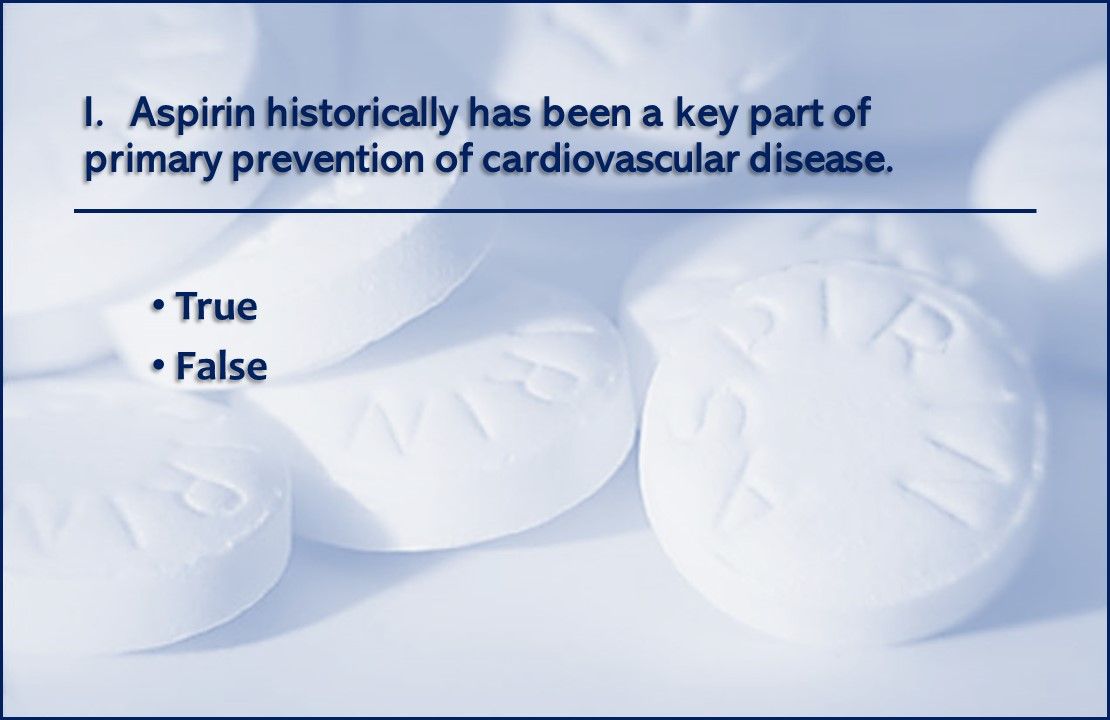
Question I. True or False: Aspirin historically has been a key part of primary prevention of cardiovascular disease.
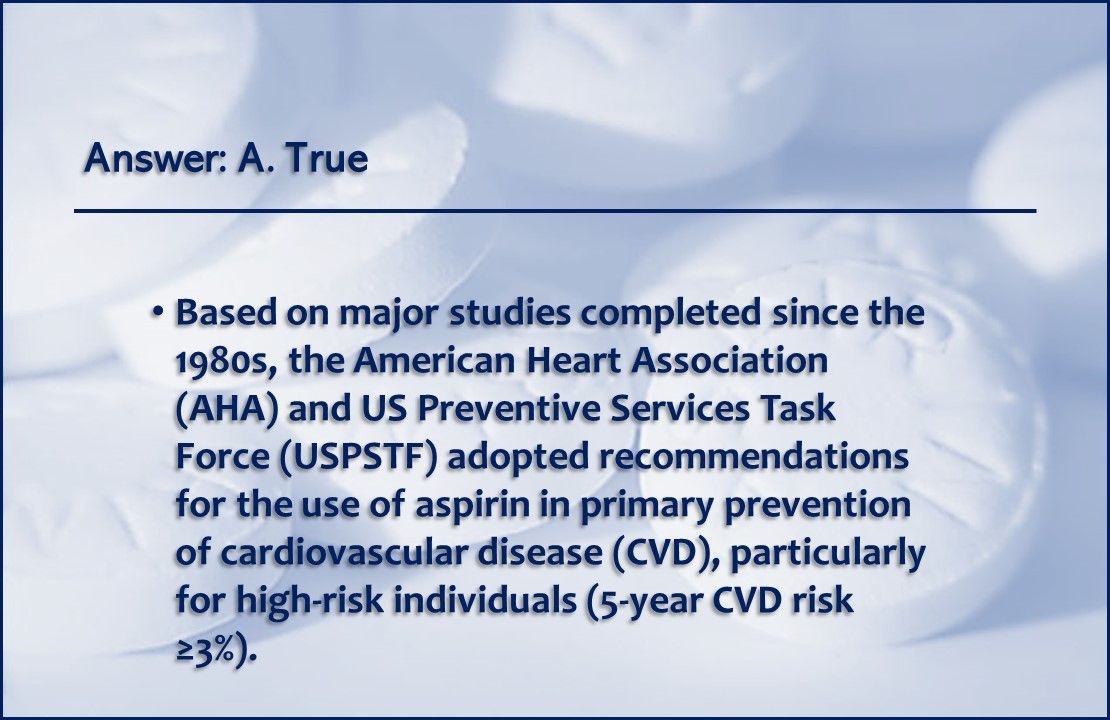
Answer: A. True. Based on major studies completed since the 1980s, the AHA and USPSTF adopted recommendations for the use of aspirin in primary prevention of cardiovascular disease (CVD), particularly for high-risk individuals (5-year CVD risk ≥3%).
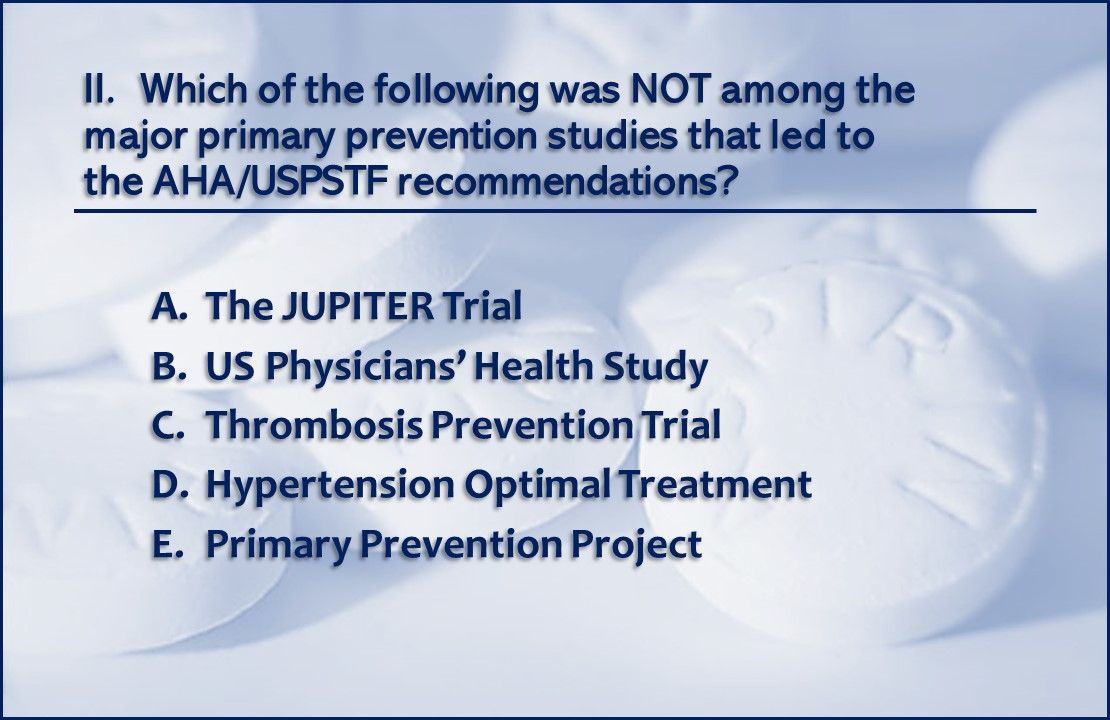
Question II. Which of the studies above was NOT among the major primary prevention studies that led to the AHA/USPSTF recommendations?
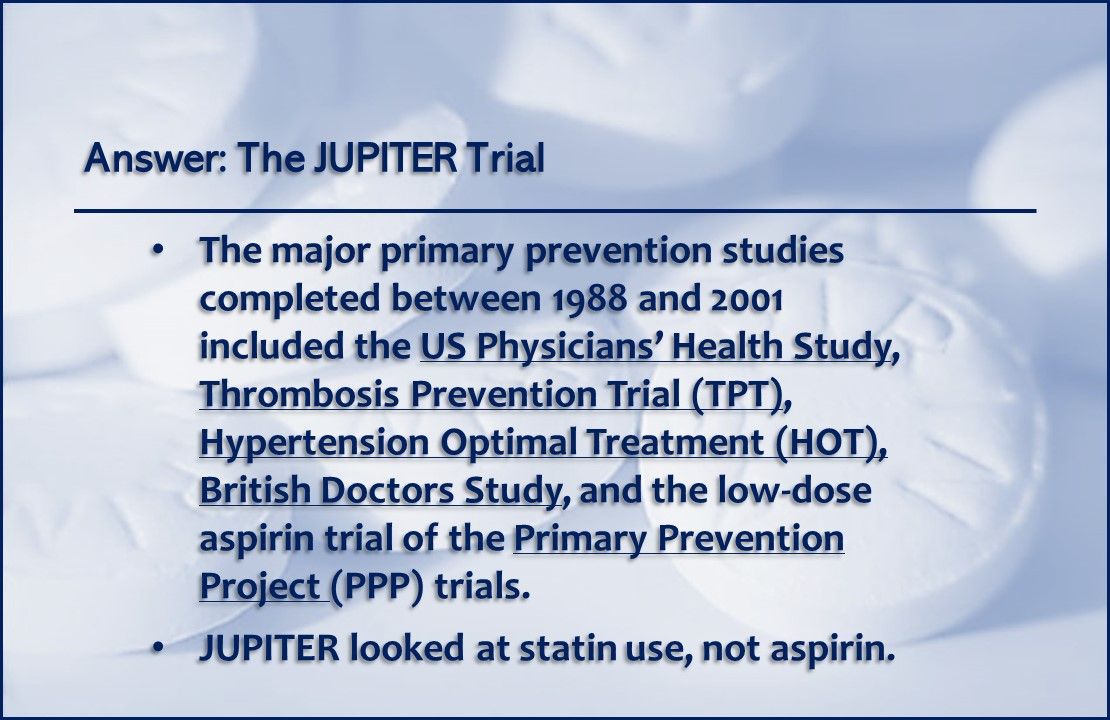
Answer: A. The Jupiter trial. The major primary prevention studies completed between 1988 and 2001 included the US Physicians’ Health Study,Thrombosis Prevention Trial (TPT), Hypertension Optimal Treatment (HOT), British Doctors Study, and the low-dose aspirin trial of the Primary Prevention Project (PPP) trials. The JUPITER trial (option A) looked at statin use, not aspirin.

Question III. True or False: The USPSTF does not recommend aspirin use for primary CVD prevention in adults older than age 50 years.

Answer: B. False. Currently, the USPSTF recommends aspirin use as primary prevention in adults aged 50-59 with a 10-year ASCVD risk of at least 10% and (1) without increased risk of bleeding or (2) life expectancy of at least 10 years (Grade B). For adults aged 60-69 with the same risk, a more individualized approach is suggested (weaker recommendation, Grade C).
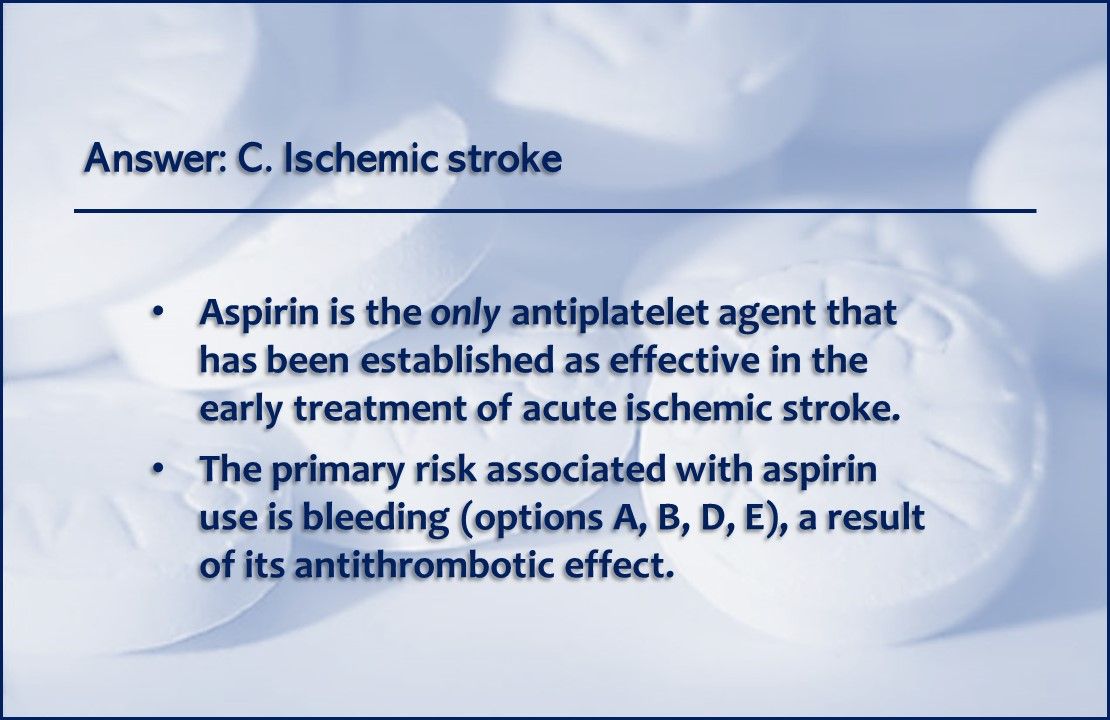
Answer: C. Ischemic stroke. Aspirin is the only antiplatelet agent that has been established as effective in the early treatment of acute ischemic stroke. The primary risk associated with aspirin use is bleeding (options A, B, D, E), a result of its antithrombotic effect.
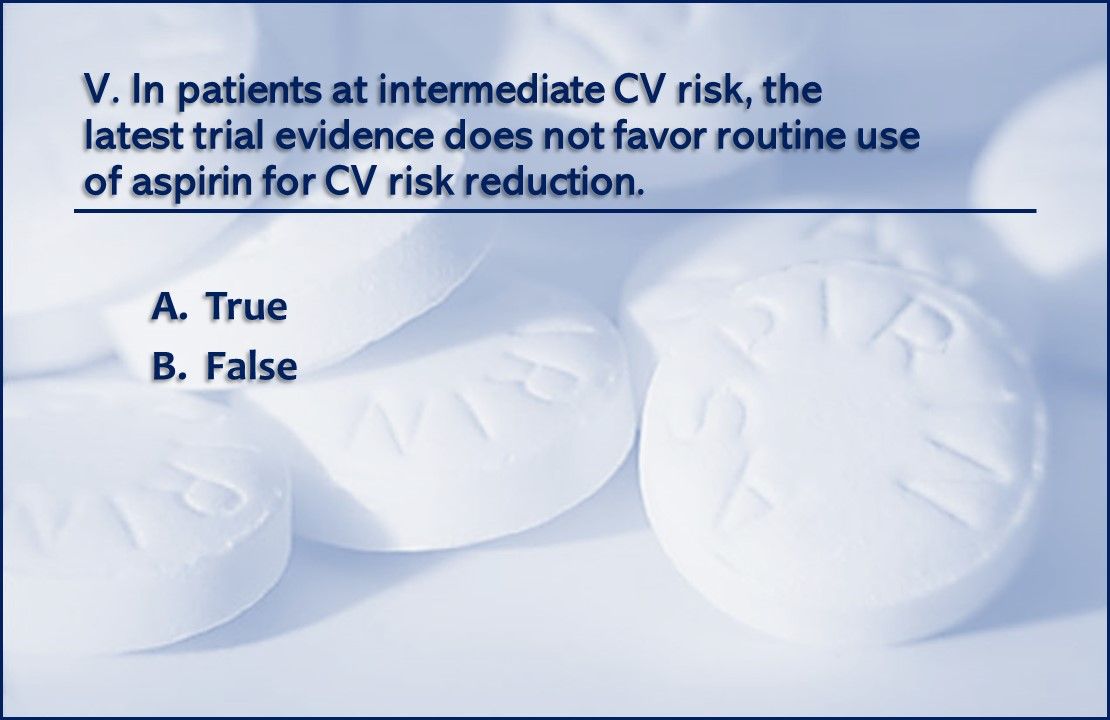
Question V. True or False: In patients at intermediate CV risk, the latest trial evidence does not favor routine use of aspirin for CV risk reduction.

Answer: B. True. In the ARRIVE trial, 100 mg of aspirin daily in an intermediate-risk population did not lead to a reduction in adverse CV events. The consensus from the study was use of aspirin in such patients should be individualized.
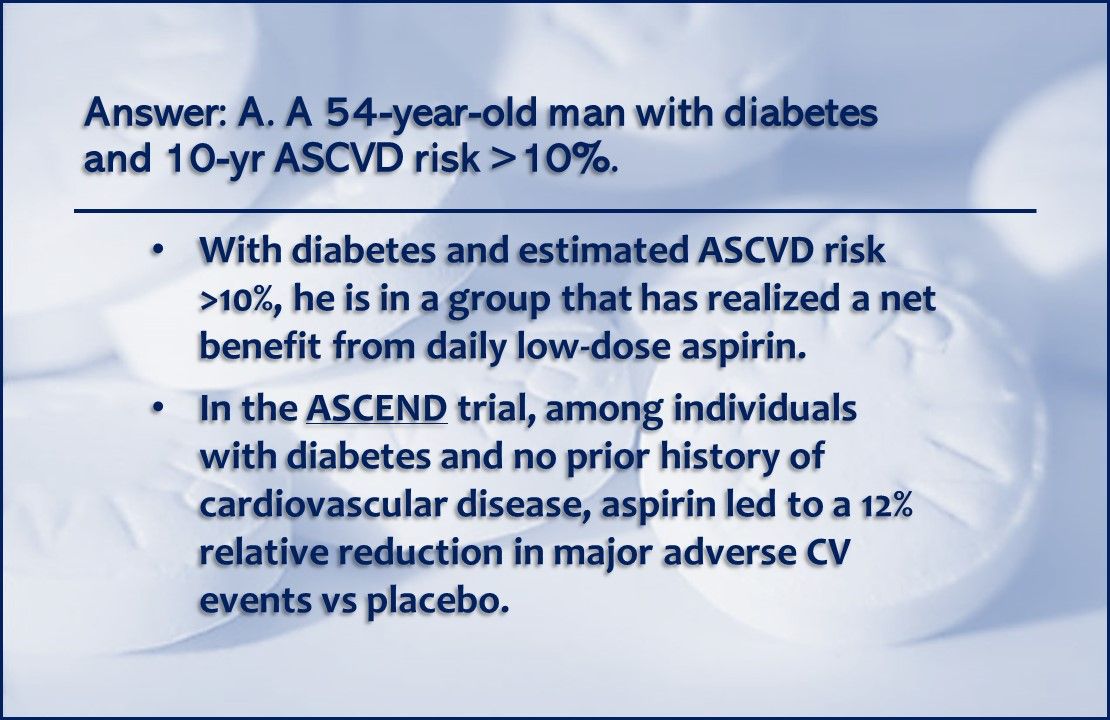
Answer: A. 54-year-old man with diabetes and 10-yr ASCVD risk >10%. With diabetes and estimated ASCVD risk >10%, he is in a group that has realized a net benefit from daily low-dose aspirin. In the ASCEND trial, among individuals with diabetes and no prior history of CVD, aspirin led to a 12% relative reduction in major adverse CV events vs placebo.
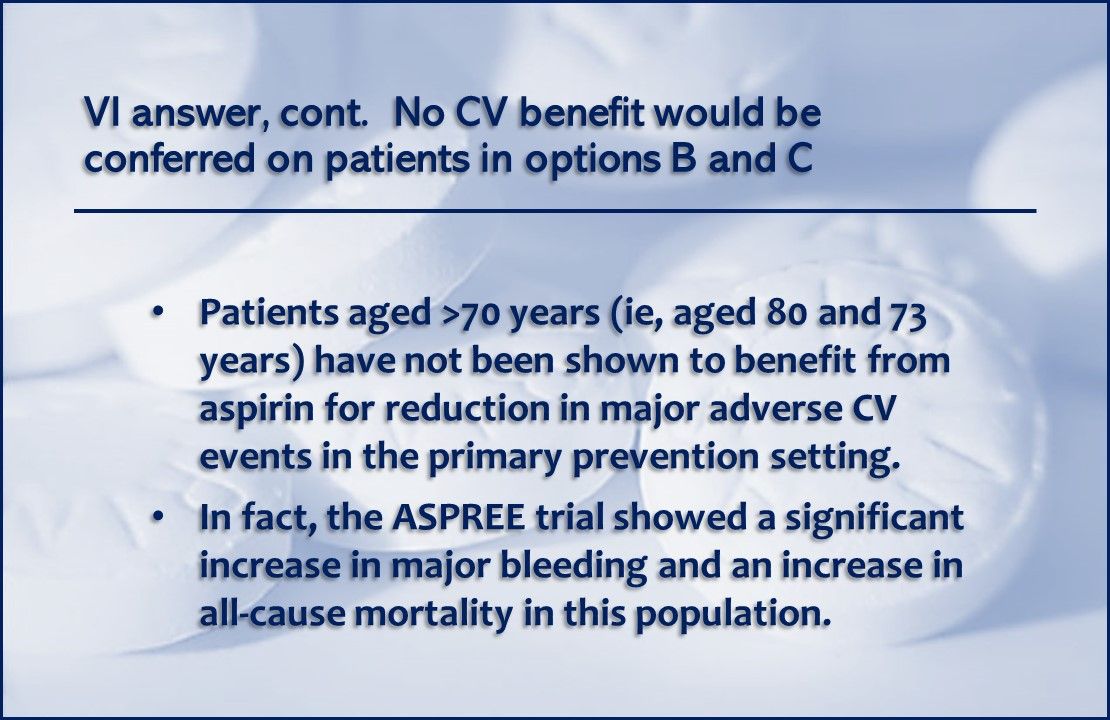
Answer, continued. No benefit would be conferred in the patients in options B and C: Patients older than age 70 years have not been shown to benefit from aspirin for reduction in major adverse CV events in the primary prevention setting. In fact, the ASPREE trial showed a significant increase in major bleeding and an increase in all-cause mortality in this population.
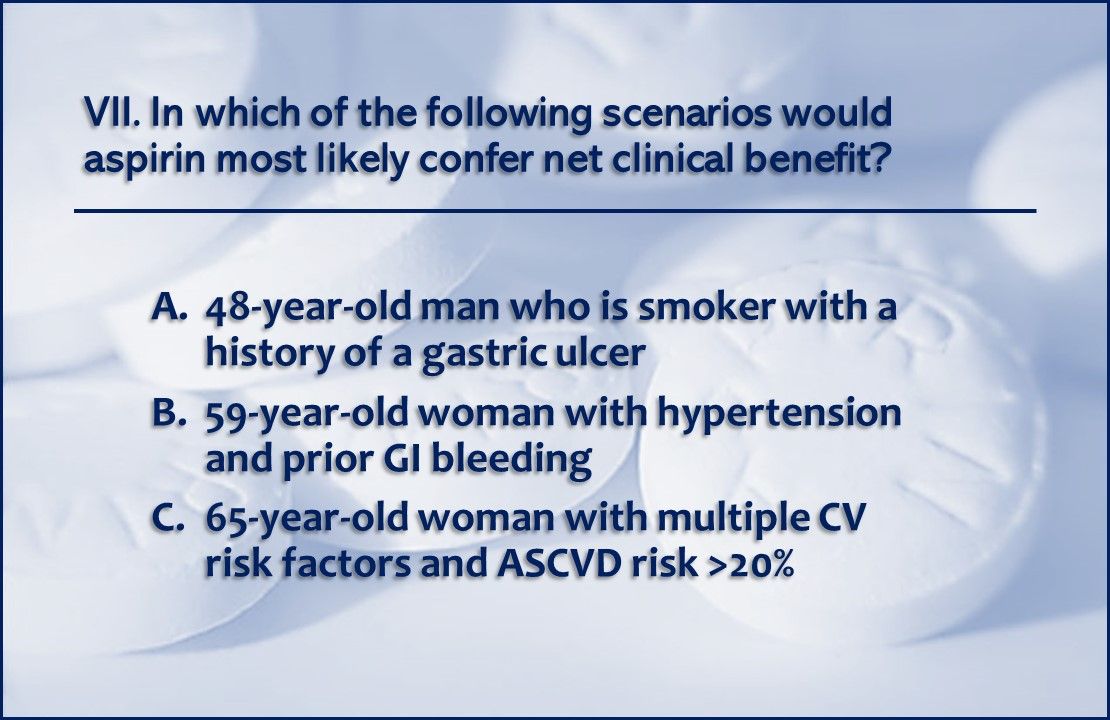
Question VII. In which of the scenarios above would aspirin most likely confer net clinical benefit?
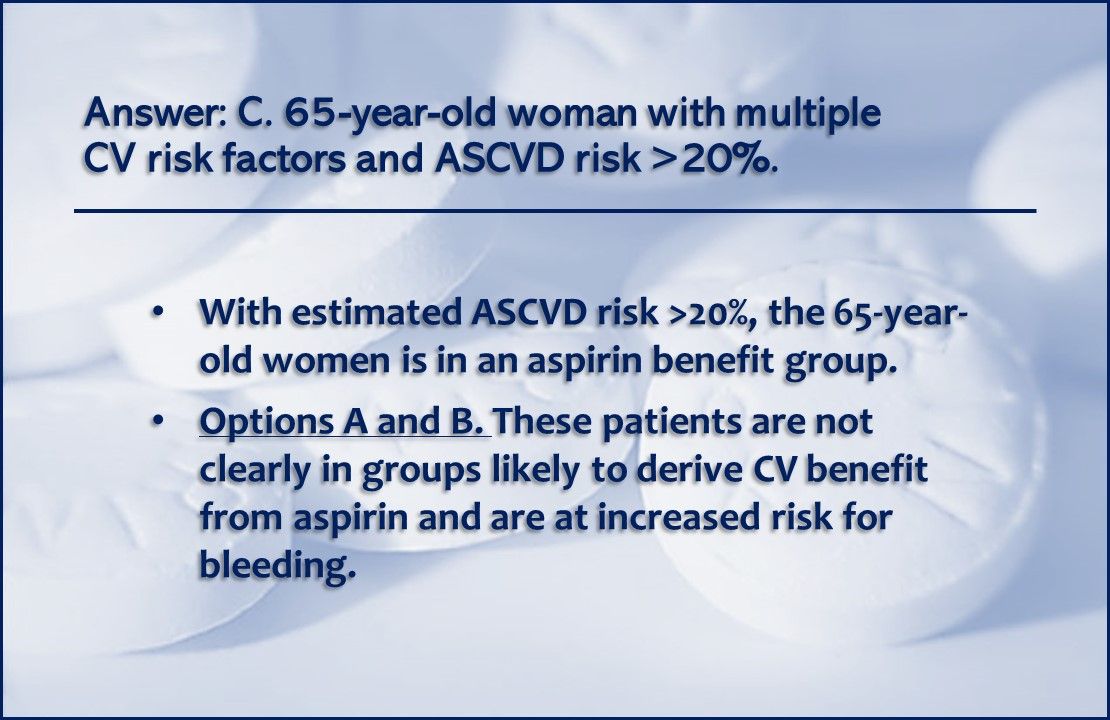
Answer: C. 65-year-old woman with multiple CV risk factors and ASCVD risk >20%. With estimated ASCVD risk >20%, she is in an aspirin benefit group. Options A and B. These patients are not clearly in groups likely to derive CV benefit from aspirin and are at increased risk for bleeding.
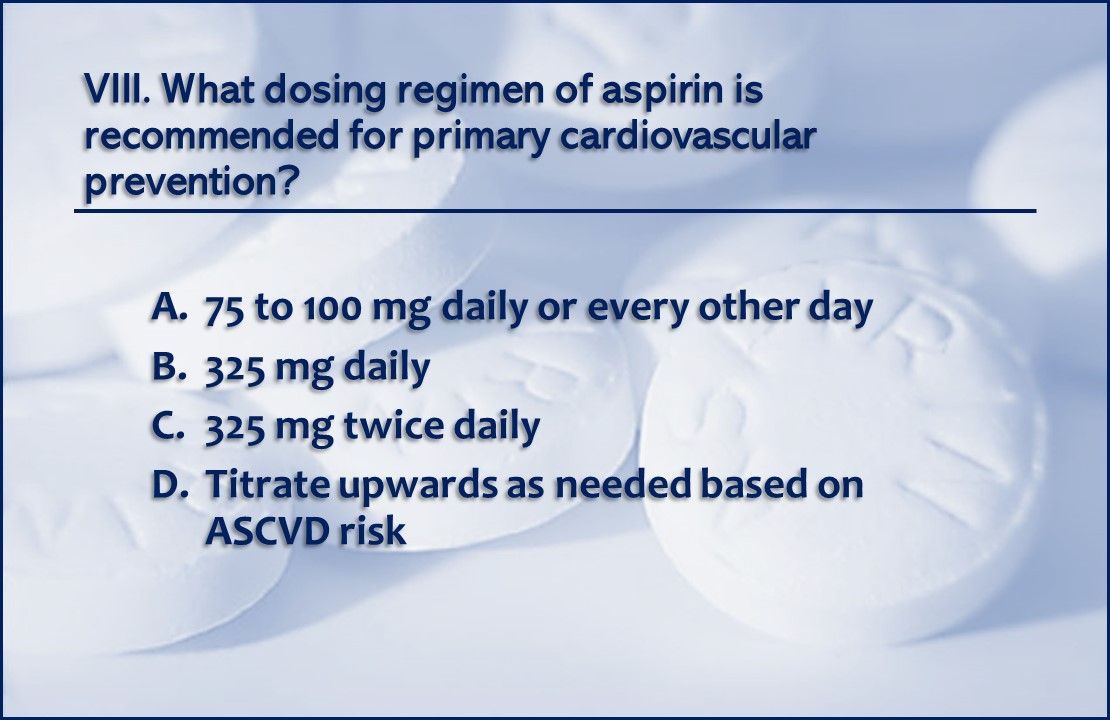
Question VIII. Which of the aspirin dosing regimens above is recommended for primary cardiovascular prevention?

Answer: A. 75-100 mg daily or every other day. Low-dose aspirin (75 to 100 mg) taken every day or every other day is recommended for primary prevention. In the US, 81 mg daily is often used. While recent studies (ASPREE, ARRIVE, ASCEND) used 100 mg of daily aspirin, the 2005 Women’s Health Study used the lowest absolute dose (100 mg every other day) to show CV benefit. It is possible that even lower doses may be effective in reducing CVD risk while minimizing bleeding events.





